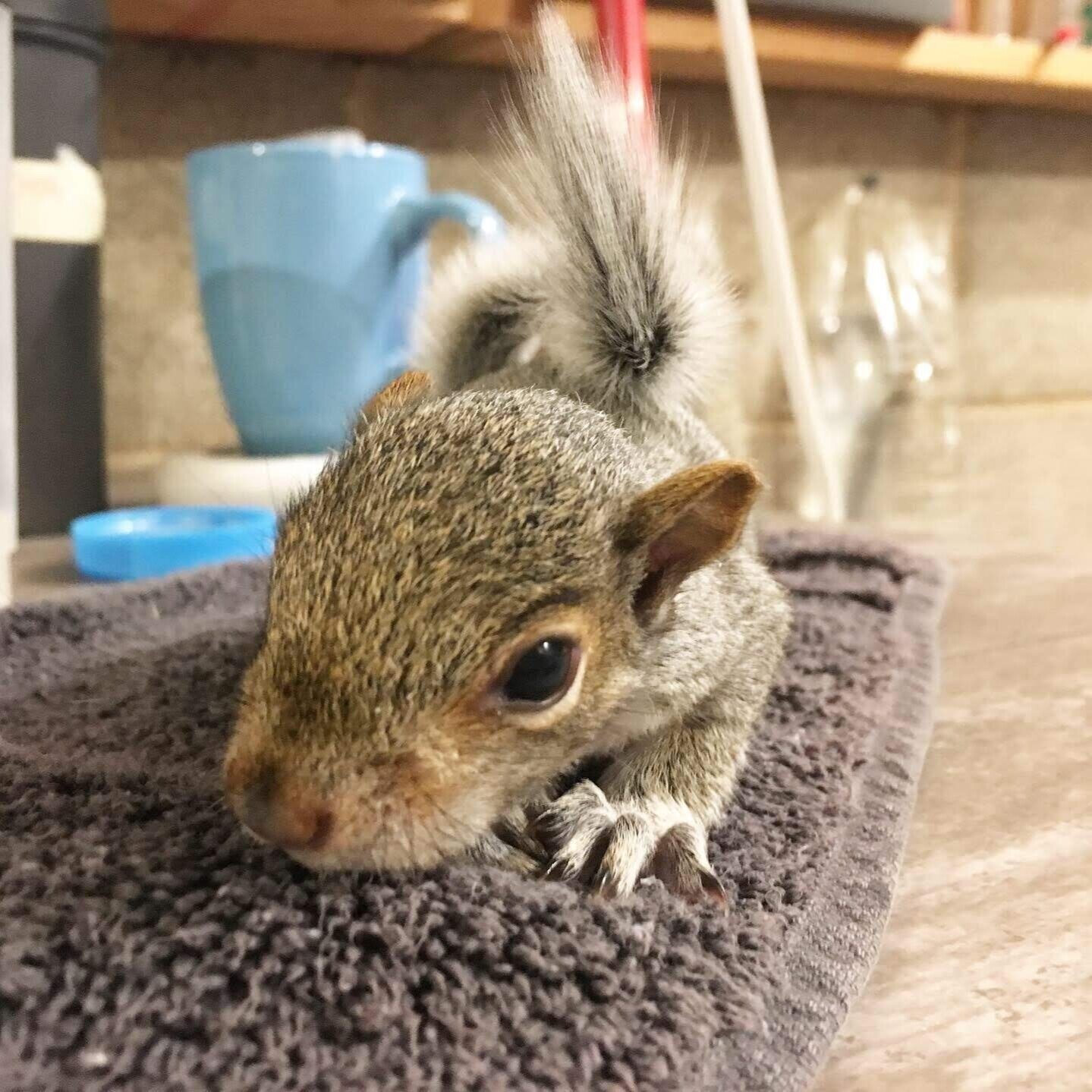
Help! I Found a Squirrel!
Pennsylvania is home to a variety of squirrel species. Here, we will focus on native tree squirrels, including the Eastern Gray Squirrel, Fox Squirrel, Red Squirrel and Southern Flying Squirrel. Squirrels are common backyard animals, making them one of the most admitted patients by wildlife rehabilitators.
Remember: It is illegal to keep and raise wildlife
Myth: Squirrels will abandon their babies because you touched them.
If You Find a Squirrel That:
Is on the ground unharmed and you can see the nest
Had its nest completely destroyed
Is a juvenile about 2/3 the size of an adult, can climb trees and has a bushy tail
This is normal! For more solutions to common problems with squirrels in human spaces, visit this page.
If You Find a Squirrel That:
Has been in a dog or cat’s mouth
Is bleeding or bruised
Appears wet and/or is crying nonstop
Has parasites, including fly eggs (look like little grains of rice)
Was hit by a car
This is an emergency. Receive immediate support here or contact your local wildlife rehabilitator.
How To Save Baby and Juvenile Squirrels
One of the first signs of spring is the nesting of Eastern Gray Squirrels. Squirrels generally have two litters per season, one in early spring and one in late summer/fall. Tree squirrels make nests of leaves, called dreys, within tree branches and will also use tree cavities to build a nest. Some species, like the Southern Flying Squirrel, may live communally during different parts of the year. If a squirrel loses its mother, other related adult females may adopt the orphans.
Squirrel kits are born pink and hairless with their eyes and ears closed. Kits will remain in the nest for six to seven weeks as their eyes and ears open, and they grow fur. During this stage, squirrels have not yet developed their fear of humans. If they’ve fallen from the nest, they may be easily approached and picked up.
After about seven weeks, kits begin to explore outside of their nest. The young squirrels are still nursing from their mother but are beginning to explore solid foods. Squirrels that are healthy and old enough to be outside the nest are not easily caught and are okay to stay where they are!
Any type of container that safely holds the babies will work for renesting. Infants with no fur can lose body heat quickly, so keep them warm.
This squirrel still needs its mother. Sometimes, curious young squirrels fall from the nest. Use the renesting strategies below, or place the squirrel on the tree and encourage it to climb to the nest.
These squirrels are old enough to be on their own. They are able to climb trees, run from predators and their tails are fluffy. Younger squirrels do not know to stay away from humans.
How To Renest Baby Squirrels
Baby squirrels can fall from the nest after storms or tree trimming. Thoroughly check each tree before trimming to ensure no animals are nesting.
Check the baby carefully for injuries. Purple or red spots under the skin are a common sign of bruising after a fall. If the kits appear injured, contact a wildlife rehabilitator immediately.
Do not offer them any food, water or formula. We want them to be hungry and call for their mom!
Keep the baby warm — it’s a priority! If the babys’ eyes are still closed, gather and place them in a box they cannot crawl out of. Fill a water bottle with hot water and wrap it in a towel. Place the wrapped water bottle securely in the box next to the babies. You may need to reheat the water bottle throughout the reunion process. You can also use heating pads, rice-filled socks or hand warmers.
Place the babies back in a safe location as close as possible to where they were found. If their nest has been destroyed, don’t worry! Mom will have multiple nests that she can take the babies to. The box may be placed at the base of a tree or securely attached to a tree if you know where the nest is located.
Leave the area and watch from a distance. Mom will not come back to the area if she senses danger (humans, pets, tree trimmers, etc.). Some people have reported success using a Bluetooth speaker and playing the sounds of crying baby squirrels to encourage mom to come back.
Allow at least six hours for mom to retrieve the baby. Most squirrels are active at dawn and dusk. Flying Squirrels are most active at night. If you see adult squirrels in the area or if mom has collected some of the babies, allow more time for her to move them.
Keep the babies warm and secure. Do not offer them any food, water or formula.
Contact a wildlife rehabilitator for help if mom does not retrieve the babies.
How To Save Adult Squirrels
An adult squirrel that is unable to escape humans is an emergency. This is often due to traumatic injury, such as, predator attacks or being hit by a car. Squirrels may also become weak from a variety of illnesses. Although squirrels are not a normal Rabies Vector Species (RVS), you should take extreme caution with any mammal that is not acting normal.
A variety of injuries and ailments are common in adult squirrels. If you find an adult squirrel in need, extreme caution should be taken because they have powerful teeth. Use thick gloves and/or a think blanket to carefully collect an adult squirrel and place them in a chew-proof container for transport to the nearest wildlife rehabilitator. Live traps may also be used.
Tree squirrels are also sometimes seen with missing patches of fur. Contact a wildlife rehabilitator to discuss the best course of action. During nesting season, this may be normal or temporary, but it can also be signs of serious disease such as mange.
For more solutions to common problems with squirrels in human spaces, visit this page.
Do you still have questions after reading the information above? Contact us or a local wildlife rehabilitator!
Have you found this FREE information helpful? Help support our work and expand our services by giving a gift.
Resources
Answering the Call of the Wild by Erin Luther. Toronto Wildlife Centre.




